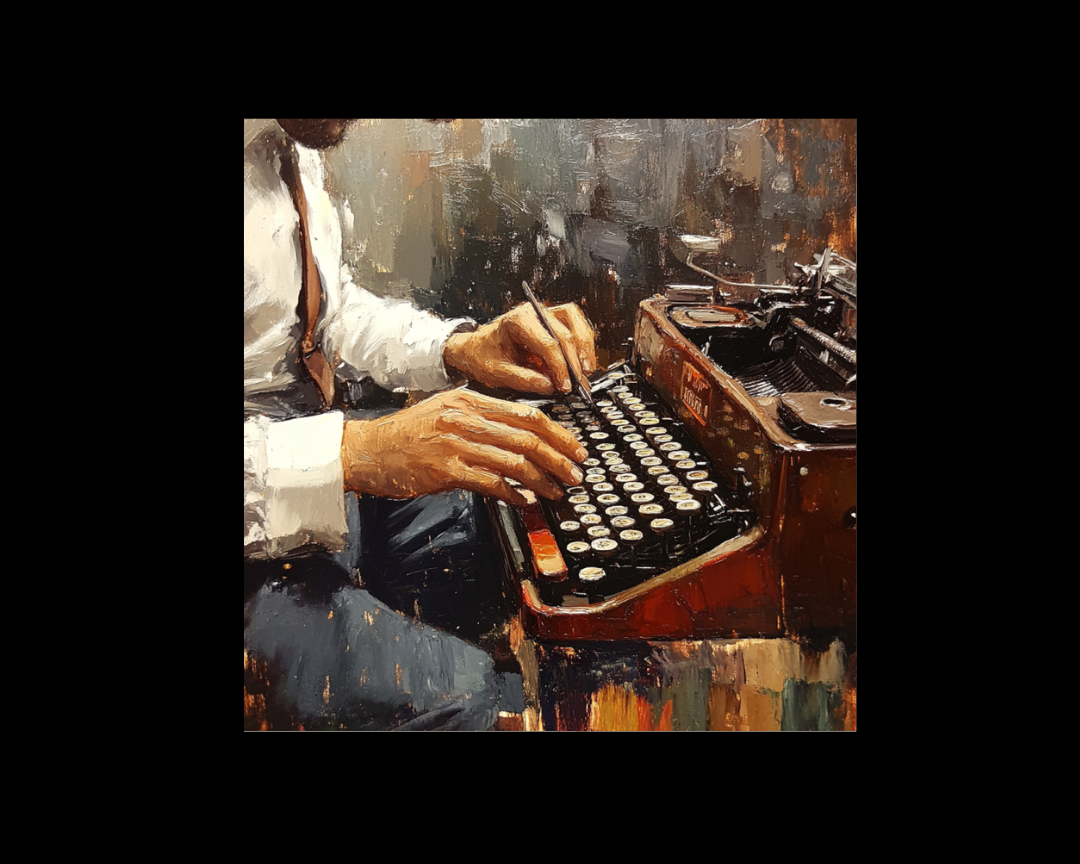Great Novellas and How to Write Them
The novella occupies literature's sweet spot—long enough to develop complex themes yet short enough to sustain perfect tension throughout. Ian McEwan...

Writing a novel is easy. Writing a good novel is hard. That's just life. If it were easy, we'd all be writing best-selling, prize-winning fiction.
Frankly, there are a thousand different people out there who can tell you how to write a novel. There are a thousand different methods. The best one for you is the one that works for you.
In this article, I'd like to share with you what works for me. The "Snowflake Method" is a structured approach to novel design that starts small and grows organically, just like a fractal snowflake pattern. It's about building your story from a single sentence into a complete novel through a series of logical, manageable steps.
Good fiction doesn't just happen, it is designed. You can do the design work before or after you write your novel. I've done it both ways and I strongly believe that doing it first is quicker and leads to a better result. Design is hard work, so it's important to find a guiding principle early on. This article will give you a powerful metaphor to guide your design.
Our fundamental question is this: How do you design a novel?
Just as a snowflake begins with a simple triangle and grows through iterations into a complex pattern, your novel can start with a simple idea and evolve into a rich, multi-layered story.
I claim that that's how you design a novel — you start small, then build stuff up until it looks like a story. Part of this is creative work, and I can't teach you how to do that. Not here, anyway. But part of the work is just managing your creativity — getting it organized into a well-structured novel. That's what I'd like to teach you here.
Before you start writing, you need to get organized. You need to put all those wonderful ideas down on paper in a form you can use. Why? Because your memory is fallible, and your creativity has probably left a lot of holes in your story — holes you need to fill in before you start writing your novel. You need a design document. And you need to produce it using a process that doesn't kill your desire to actually write the story. Here is a ten-step process for writing a design document.
Take an hour and write a one-sentence summary of your novel. Something like this: "A rogue physicist travels back in time to kill the apostle Paul."
This sentence will serve you forever as a ten-second selling tool. This is the big picture, the analog of that big starting triangle in the snowflake picture.
Some hints on what makes a good sentence:
Take another hour and expand that sentence to a full paragraph describing the story setup, major disasters, and ending of the novel. This is the analog of the second stage of the snowflake.
I like to structure a story as "three disasters plus an ending". Each of the disasters takes a quarter of the book to develop and the ending takes the final quarter.
If you believe in the Three-Act structure, then the first disaster corresponds to the end of Act 1. The second disaster is the mid-point of Act 2. The third disaster is the end of Act 2, and forces Act 3 which wraps things up. It is OK to have the first disaster be caused by external circumstances, but I think that the second and third disasters should be caused by the protagonist's attempts to "fix things". Things just get worse and worse.
Ideally, your paragraph will have about five sentences. One sentence to give me the backdrop and story setup. Then one sentence each for your three disasters. Then one more sentence to tell the ending.
Characters are the most important part of any novel, and the time you invest in designing them up front will pay off ten-fold when you start writing. For each of your major characters, take an hour and write a one-page summary sheet that tells:
An important point: You may find that you need to go back and revise your one-sentence summary and/or your one-paragraph summary. Go ahead! This is good–it means your characters are teaching you things about your story.
By this stage, you should have a good idea of the large-scale structure of your novel, and you have only spent a day or two. Well, truthfully, you may have spent as much as a week, but it doesn't matter. If the story is broken, you know it now, rather than after investing 500 hours in a rambling first draft.
Take several hours and expand each sentence of your summary paragraph into a full paragraph. All but the last paragraph should end in a disaster. The final paragraph should tell how the book ends.
This is a lot of fun, and at the end of the exercise, you have a pretty decent one-page skeleton of your novel. It's okay if you can't get it all onto one single-spaced page. What matters is that you are growing the ideas that will go into your story.
Take a day or two and write up a one-page description of each major character and a half-page description of the other important characters. These "character synopses" should tell the story from the point of view of each character.
As always, feel free to cycle back to the earlier steps and make revisions as you learn cool stuff about your characters. I usually enjoy this step the most and lately, I have been putting the resulting "character synopses" into my proposals instead of a plot-based synopsis. Editors love character synopses, because editors love character-based fiction.
By now, you have a solid story and several story-threads, one for each character. Now take a week and expand the one-page plot synopsis of the novel to a four-page synopsis. Basically, you will again be expanding each paragraph from step (4) into a full page.
This is a lot of fun, because you are figuring out the high-level logic of the story and making strategic decisions. Here, you will definitely want to cycle back and fix things in the earlier steps as you gain insight into the story and new ideas whack you in the face.
Take another week and expand your character descriptions into full-fledged character charts detailing everything there is to know about each character. The standard stuff such as birthdate, description, history, motivation, goal, etc. Most importantly, how will this character change by the end of the novel?
This is an expansion of your work in step (3), and it will teach you a lot about your characters. You will probably go back and revise steps (1-6) as your characters become "real" to you and begin making petulant demands on the story. This is good — great fiction is character-driven.
Before you actually start writing, it's useful to make a list of all the scenes that you'll need to turn the story into a novel. And the easiest way to make that list is with a spreadsheet.
Make a spreadsheet detailing the scenes that emerge from your four-page plot outline. Make just one line for each scene. In one column, list the POV character. In another (wide) column, tell what happens. If you want to get fancy, add more columns that tell you how many pages you expect to write for the scene.
A spreadsheet is ideal, because you can see the whole storyline at a glance, and it's easy to move scenes around to reorder things. When you are done, you can add a new column for chapter numbers and assign a chapter to each scene.
Switch back to your word processor and begin writing a narrative description of the story. Take each line of the spreadsheet and expand it to a multi-paragraph description of the scene. Put in any cool lines of dialogue you think of, and sketch out the essential conflict of that scene. If there's no conflict, you'll know it here and you should either add conflict or scrub the scene.
This step is optional, and many writers who use the Snowflake Method skip it. But it can be a way to create what amounts to a very detailed outline, almost a prototype first draft.
At this point, just sit down and start pounding out the real first draft of the novel. You will be astounded at how fast the story flies out of your fingers at this stage.
You might think that all the creativity is chewed out of the story by this time. Well, no, not unless you overdid your analysis when you wrote your Snowflake. This is supposed to be the fun part, because there are many small-scale logic problems to work out here. How does Hero get out of that tree surrounded by alligators and rescue Heroine who's in the burning rowboat? This is the time to figure it out!
But it's fun because you already know that the large-scale structure of the novel works. So you only have to solve a limited set of problems, and so you can write relatively fast.
About midway through a first draft, I usually take a breather and fix all the broken parts of my design documents. Yes, the design documents are not perfect. That's okay. The design documents are not fixed in concrete, they are a living set of documents that grows as you develop your novel.
Are you struggling right now with a horrible first draft of your novel that just seems hopeless? Take an hour and summarize your story in one sentence. Does that clarify things? You've just completed step (1) of the Snowflake, and it only took an hour. Why not try the next few steps of the Snowflake and see if your story doesn't suddenly start coming to life? What have you got to lose, except a horrible first draft that you already hate?
Are you a seat-of-the-pants writer who finally finished your novel, but now you're staring at an enormous pile of manuscript that desperately needs rewriting? Take heart! Your novel's done, isn't it? You've done something many writers only dream about. Now imagine a big-shot editor bumps into you in the elevator and asks what your novel's about. In fifteen words or less, what would you say? Take your time! This is a thought game. What would you say? If you can come up with an answer in the next hour... you've just completed Step 1 of the Snowflake!
Have you just got a nightmarishly long letter from your editor detailing all the things that are wrong with your novel? Are you wondering how you can possibly make all the changes before your impossible deadline? It's never too late to do the Snowflake. How about if you take a week and drill through all the steps right now? It'll clarify things wonderfully, and then you'll have a plan for executing all those revisions.
There is no reason to spend 500 hours writing a wandering first draft of your novel when you can write a solid one in 150. Counting the 100 hours it takes to do the design documents, you come out way ahead in time.
The Snowflake Method isn't for everyone, but if you're the kind of writer who likes to plan before diving in, this approach might just be what you need to create a better novel in less time. It helps you address structural issues before you've written thousands of words, and it ensures that character and plot development happen in tandem, creating a more cohesive story.

The novella occupies literature's sweet spot—long enough to develop complex themes yet short enough to sustain perfect tension throughout. Ian McEwan...
.png)
In the intricate tapestry of literature, intertextuality emerges as a powerful tool that allows writers to create connections, enrich narratives, and...

In the vast landscape of the writing world, there are many paths to the summit of a completed novel. Some writers prefer the winding, serendipitous...